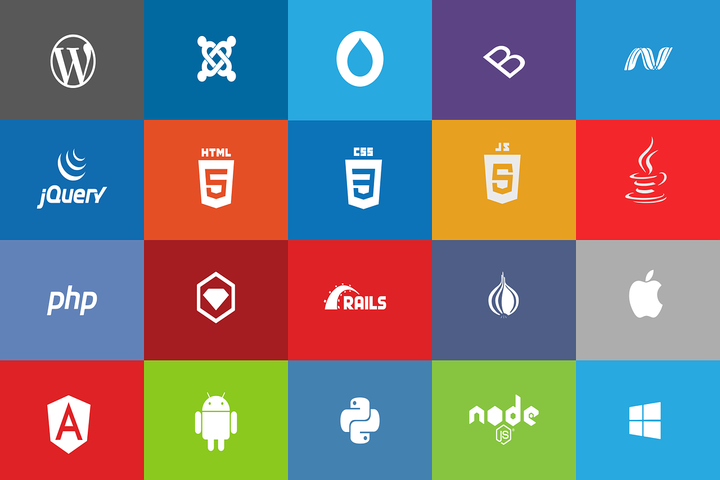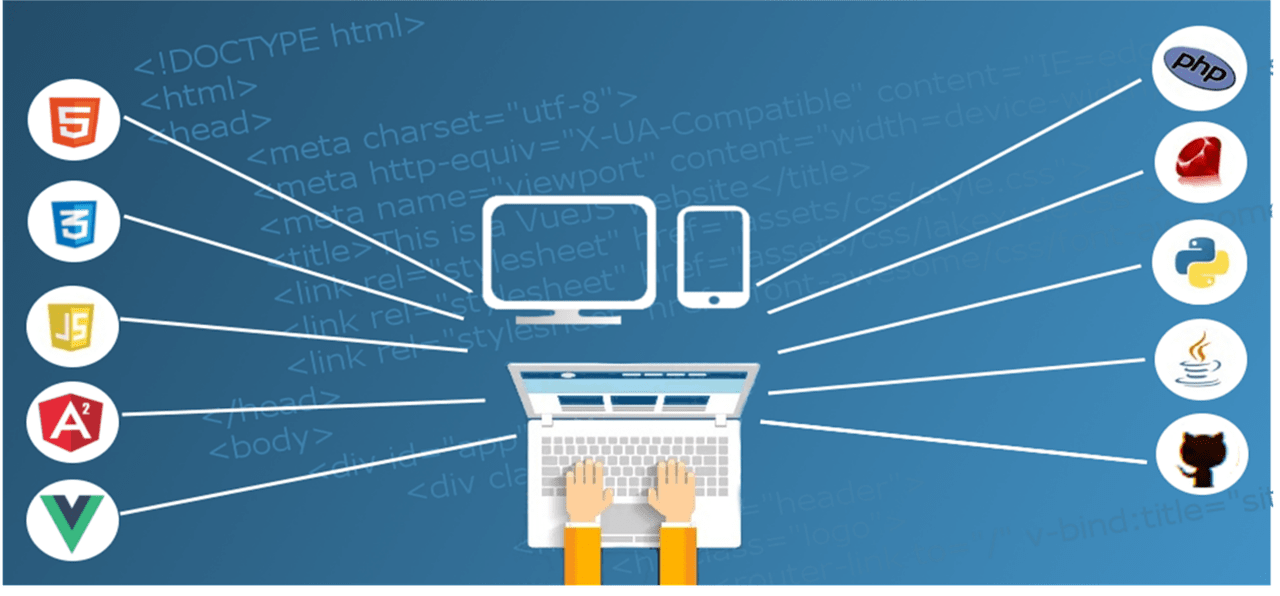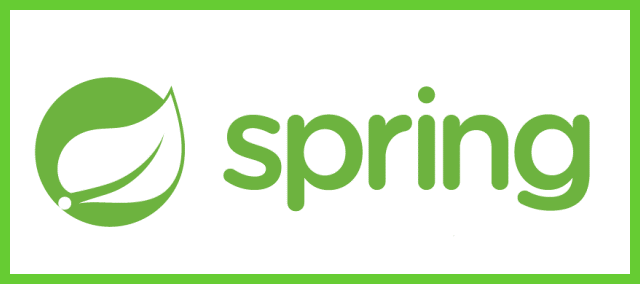Programming
Top 5 Best Web Development Frameworks For Popular Programming Languages
Here are the top 5 best web development frameworks for popular programming languages, with the help of these you can develop rapid web applications.

In past years, Web Application Development has gone through a few kinds of evolution. It has become simpler and more flexible for web developers to create web applications. Frameworks are simplified the whole web application development process. There are different types of Web Development Frameworks are out there. The top 5 best web development frameworks for popular programming languages.

The Top Best Web Development Frameworks are listed below
Table of Contents
1. Django
Language: Python

Django is a Python-related opensource web application development framework; Django Follows MVC architectural pattern.
This Framework Supports building rapid applications development and clean and comfortable syntax such as programmatic and logical design. Still, it is not ideally suitable for beginners; Django is a full-stack web application development Framework for experienced developers and programmers.
The software is developed and maintained by the Django Software Foundation. The main target of this Framework is To simplify the complexity and ease of coding means less code and rapid development.
Django was Initial release on 15 July 2005.
Different popular sites use Django Framework like Public Broadcasting Service, Pinterest, Bitbucket, Instagram, Mozilla Firefox, The Washington Times, Disqus, Bitbucket, Nextdoor, and many others.
For More Info:- https://www.djangoproject.com/
2. Angular JS
Language: Javascript

Angular js is an open-source front-end web application development framework, and it is suitable for single-page web applications (SPAs) written in javascript developed and maintained by Google and its community.
It is based on the client-side model–view–controller (MVC) and Model View ViewModel (MVVM) or model-view-whatever (MV*) architectural Pattern. The initial release on October 20, 2010;
Angular (version 2 or more) is a complete rewrite of the Angular Js (version 1); it is Written in a typescript programming language. It contains all the features of Angular JS and also including some other features.
Angular recommends using TypeScript language instead of javascript because Typescript contains additional features. Javascript, Typescript is a superset of javascript language developed by Microsoft; it provides predefined classes and interfaces.
Different websites use Angular Framework like Netflix, The Guardian, PayPal, Upwork, Freelancer, Weather, JetBlue, Lego, iStock Photo, and many more.
For More Info:- https://angular.io/
Also Read: What is Object-oriented and Aspect-oriented Programming Model or Paradigm?
3. Laravel
Language: PHP

Laravel is the open-source (licensed under the terms of MIT License ) world’s most popular and widely used PHP framework for web app development, developed by Taylor Otwell, Written in PHP.
It is planned for the development applications based on model–view–controller (MVC) architectural pattern and based on Symfony.
The Laravel is the more advanced and powerful alternative to the CodeIgniter framework.
Laravel Framework uses the Model View Controller architectural pattern. Laravel is a Good choice for CMS, news articles or blog sites, social media websites, forums, etc.
There are several good reasons for this Framework to get the most popular web application development framework; the above reasons are enough to dominate.
Laravel contains various key features like Object-relation mapping (ORM), Templating, easily connected to different types of databases; the process of authenticating and caching is straightforward in this Framework; you can also create an Application Programming Interface (API) easily because of it an inbuilt feature and also simplifies the routing functionality.
The initial release of this Framework was in 2011, and the latest version of this Framework is 5.7 in 2018.
Different websites use the Laravel framework like one plus, in, builtwith.com, worldoo.com, laravel.io, worldwalking.org, Cachet, Video, Flarum, TimeGrid, October Cms, and many more.
For More Info:- https://laravel.com/
4. Spring
Language:- Java

The Spring Framework is an application framework for creating both Web and Desktop applications.
Spring is a lightweight and Open-source Framework for Developing Java EE Applications. Developed by Rod Johnson in 2002 and the latest version of the spring framework is 5.1 September 21, 2018; it supports model–view–controller (MVC) Architectural Pattern.
Spring Framework is a replacement for the Enterprise JavaBeans (EJB) Model.
Spring framework contains different modules that can provide a specific level of services.
- Spring Core Container
- Aspect-oriented programming
- Authentication and authorization
- Convention over configuration
- Data access(It supports both SQL (RDBMS) and NoSQL databases)
- Inversion of control (dependency injection)
- Messaging
- Model–view–controller
- Remote access framework
- Transaction management
- Remote management
- Testing
Different websites use the Spring framework like yatra.com,spring.io, michaels.com, edufect.com, delfi.ee,cw.no, and www. is.fi, mascus.com, and many more.
For More Info:- https://spring.io/
5. Ruby on Rails
Language:- Ruby

Ruby on Rails, or you can be called Rails, is a server-side web application framework for creating dynamic web applications.
Ruby on Rails framework written in Ruby under MIT License, initially developed by David Heinemeier Hansson. It supports model–view–controller (MVC) Architectural Pattern. Rails can also support different patterns and models, including convention over configuration (CoC), don’t repeat yourself (DRY), the active record pattern, etc.
The Ruby on Rails Framework is exposed in the 2000s for web application development ingenious Features such as seamless database table creations, migrations, and scaffolding of views to enable rapid application development.
The initial release in the year 2005 and the latest version of this Framework were 5.2.2 in 2018
There are different types of websites are using Ruby on rails frameworks like Twitter, GitHub, CrunchBase, Groupon, Shopify, Square Urban directory, Zend Desk, and many more.
For More Info:- https://rubyonrails.org/
Depends on your project requirements, you have to choose your web development framework.
Helpful Resources:
1. Why is Cybersecurity Important For Enterprises?
2. 5 Website Security Tips Every Employee Should Know
3. Get VPS Hosting For Your Websites For Better Results
4. Top Ten Blockchain Applications That Are Transforming Industries
5. 6 Best Wireless Security Cameras
6. How to Protect WebSites Against Attackers or Hackers by using “X-Security Headers.”
AI Tools
How to Choose the Best Test Automation Tool for Your Development Needs
In this blog post, we will explore essential criteria to consider when selecting a test automation tool and provide guidance to help you make an informed decision.

Choosing the right test automation tool is a critical decision that can significantly influence the efficiency and success of your software development and quality assurance processes. With a plethora of options available, each boasting unique features and capabilities, selecting the ideal tool requires careful consideration of your project’s specific needs, the skills of your team, and your long-term development goals.
In this blog post, we will explore essential criteria to consider when selecting a test automation tool and provide guidance to help you make an informed decision.
1. Understand Your Requirements
How do I choose the best test automation tool? Before diving into the sea of available test automation tools, it’s crucial to clearly define your project’s requirements. Consider the following aspects:
- Type of Application: Different tools are better suited for different types of applications (e.g., web, mobile, desktop). Identify which application type you are developing.
- Programming Languages and Frameworks: Ensure the tool supports the programming languages and frameworks your team is using.
- Integration Needs: Consider how well the tool integrates with other software used in your development process, such as build tools, version control systems, and CI/CD pipelines.
2. Evaluate Tool Capabilities
Once you have a clear understanding of your needs, evaluate the capabilities of various automation testing tools against these requirements. Key features to look for include:
- Ease of Use: Look for tools that are user-friendly and align with your team’s expertise. Tools that require minimal training can be particularly beneficial.
- Scripting and Script-less Options: Depending on your team’s proficiency, you might prefer a tool that offers script-less testing or one that uses scripting languages you are familiar with.
- Test Management Features: Comprehensive test management capabilities can help streamline the process, from planning and execution to tracking and reporting.
- Platform Compatibility: Ensure the tool can handle the operating systems and devices your application will run on.
3. Consider Tool Scalability and Flexibility
Scalability is an important factor if you anticipate growth in the scope of your testing requirements. The tool should be able to handle an increasing number of test cases and data without significant declines in performance. Flexibility is also crucial for adapting to changes in technology or project direction.

4. Assess Community and Support
The availability of a robust community and support can be invaluable. A strong user community means access to a wealth of shared knowledge and resources. Official support from the tool provider can also help resolve technical issues more quickly.
5. Review Costs and Licensing
Cost is often a decisive factor. Evaluate the total cost of ownership, which includes not just the initial cost but also ongoing expenses such as license renewals, support fees, and additional integrations. Consider open-source options, which can offer significant cost savings, though they might require more setup and maintenance effort.
6. Conduct a Pilot Test
Before finalizing your decision, conduct a pilot test with the most promising tool. This trial run will help you understand how well the tool fits with your existing setup and meets your specific testing needs. It’s a practical approach to assessing the tool’s performance and ease of integration into your workflow.
7. Leading Test Automation Tools
To get you started, here’s a brief overview of some popular test automation tools:
- Selenium is great for web applications, supports multiple languages and browsers, and integrates well with other testing frameworks.
- BugBug.io | Intuitive and Reliable Test Automation Tool: BugBug is a user-friendly, web-based tool designed for automating browser tests that simplifies the creation and management of tests without requiring extensive programming knowledge.
- Appium is ideal for mobile app testing, supporting both Android and iOS platforms with cross-platform functionality.
- TestComplete: Offers a powerful option for desktop, web, and mobile applications with both script and script-less operations.
- Cypress: A newer player, excellent for web applications with fast, reliable, and easy-to-setup features for front-end testing.
Conclusion
Choosing the right test automation tool involves a thorough analysis of your project needs, team skills, and long-term goals. By carefully considering each of these factors and conducting a comprehensive evaluation, you can select a tool that not only enhances your testing efficiency but also fits seamlessly into your development process.
Remember, the best tool is the one that most closely aligns with your specific requirements, helping you deliver quality software with greater speed and accuracy.
Table of Contents
-

 Instagram4 years ago
Instagram4 years agoBuy IG likes and buy organic Instagram followers: where to buy them and how?
-

 Instagram4 years ago
Instagram4 years ago100% Genuine Instagram Followers & Likes with Guaranteed Tool
-

 Business5 years ago
Business5 years ago7 Must Have Digital Marketing Tools For Your Small Businesses
-

 Instagram4 years ago
Instagram4 years agoInstagram Followers And Likes – Online Social Media Platform
















